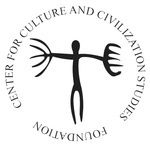The Bronze Age as the First World-System: Theses for a Research Agenda
Abstract
Bronze Age is traditionally viewed as historical period in the third and second millennia BCE. My key contention is that it is more meaningfully considered in geographic terms, as interconnected space of trade and cultural exchanges encompassing Afro-Eurasia but not Tropical Africa, let alone Australia and the Americas. The Bronze-age world-system extended from Scandinavia and British Isles to Egypt and Mesopotamia, from the Indus valley civilization and ancient Arabia to the Urals and western Siberia, possibly, also China and South-East Asia. Geologically, copper and tin as two metal components of bronze are randomly distributed on the planet which necessitated long-distance trade. In turn, the world trade in metals created whole cascades of logistical needs and opportunities. The consequences included the emergence of social complexity: chiefly powers, diplomacy, merchants, specialist coppersmiths and weapons-makers, professional warriors. New means of transportation emerged such as sailed ship and domesticated pack animals (donkey, camel, horse). The exchange in secondary products (wine, cloth, elaborate pottery) led to a revolution in conspicuous consumption. These theses are intended to generate a discussion about the earliest world-system, its morphology and flows. This may also extend to the comparative analysis of later world-systems known to us Antiquity, the Medieval ‘Silk Roads’, and modern capitalism.
References
Michael Mann. The Sources of Social Power. Volume 1: A History of Power from the Beginning to AD 1760 (Cambridge University Press, 1986).
Randall Collins. “Why the social sciences won't become high-consensus, rapid-discovery science.” Sociol Forum 9, (1994): 155–177.
Клейн, Л. С. «Методологическая природа археологии», Российская Археология. 4 (1992): 86—96.
William McNeill. The Rise of the West. (Chicago: University of Chicago Press, 1963).
Lauren Ristvet. In the Beginning: World History from Human Evolution to the First States. (New York: McGraw-Hill, 2007).
Frederic Lane. Profits from Power. Readings in Protection Rent and Violence-Controlling Enterprises. (Albany, NY: State University of New York Press, 1979).
Волков, Вадим. «Новгородская республика как тип охранного контракта», Неприкосновенный запас №5, 2007.
Philippe Beaujard. The Worlds of the Indian Ocean: Volume 1, From the Fourth Millennium BCE to the Sixth Century CE: A Global History (The Worlds of the Indian Ocean 2 Hardback Book Set) Transl. from French. (New York: Cambridge University Press, 2019).
Peter Magee. The archaeology of prehistoric Arabia: adaptation and social formation from the Neolithic to the Iron age. (Cambridge University Press, 2014).
Gojko Barjamovic. A Historical Geography of Anatolia in the Old Assyrian Colony Period. (Chicago University Press, 2011).
Andrew Curry. "Slaughter at the bridge: Uncovering a colossal Bronze Age battle". (24 March 2016). Science. https://www.science.org/content/article/slaughter-bridge-uncovering-colossal-bronze-age-battle Retrieved 04 October 2022.
Иван Семьян. Пробиваем доспех из лука: какая стрела уложит противника? АНТРОПОГЕНЕЗ.РУ Ученые против мифов-17. 22 апреля 2022 https://www.youtube.com/watch?v=s2l98SrlILw Retrieved 04 October 2022.
Епимахов А. В. и коллектив авторов. Южный Урал в начале эпохи металлов. Бронзовый век. (Челябинск: Издательство Южноуральского государственного университета, 2021).
Librado, P., Khan, N., Fages, A. et al. The origins and spread of domestic horses from the Western Eurasian steppes. Nature 598, (2021): 634–640.
T.D. Hall, Nick Kardulias, P. & Chase-Dunn, C. World-Systems Analysis and Archaeology: Continuing the Dialogue. J Archaeol Res 19 (2011): 233–279.
Kristiansen, Kristian, with Thomas Lindkvist and Janken Myrdal (eds.) Trade and Civilisation. Economic Networks and Cultural Ties from Prehistory. (Cambridge University Press, 2018).
The Má II Project: Ancient Boat Lab. NYUAD https://nyuad.nyu.edu/en/research/faculty-labs-and-projects/ma-the-ancient-boat-lab.html Retrieved o4 October 2022.
Sherratt, S. & Sherratt, A. “From luxuries to commodities; The nature of Bronze Age trading systems.” Bronze age trade in the Mediterranean: Papers presented at Rewley House. (Oxford, December, 1989).
Patrick E. McGovern. Ancient Wine: The Search for the Origins of Viniculture. (Princeton: Princeton University Press, 2006).
Yasur-Landau, Assaf. “Levant”. Pp. 832-848 in: Cline, E. H. ed. The Oxford Handbook of the Aegean Bronze Age. (Oxford: Oxford University Press, 2010).
Marciniak, A. “The Secondary Products Revolution: Empirical Evidence and its Current Zooarchaeological Critique.” Journal of World Prehist 24, 117–130 (2011).
Timothy Earle. How Chiefs Come to Power: The Political Economy in Prehistory. Stanford University Press, 1997.
Pare, C. “Weighing, commodification, and money”, pp. 508–527 in: H. Fokkens, A. Harding (eds.) Oxford Handbook of the European Bronze Age, (Oxford University Press, 2013).
Colin Renfrew. “Systems of value among material things: The nexus of fungibiligy and measure”, pp. 249–260 in: J. K. Papadopoulos, G. Urton (eds.) The Construction of Value in the Ancient World, Cotsen Institute of Archaeology Press, 2012.
Kristiansen, Kristian, with Thomas Lindkvist and Janken Myrdal (eds.) Trade and Civilisation. Economic Networks and Cultural Ties from Prehistory. Cambridge University Press, 2018.
Eric Cline. 1177 B.C.: The Year Civilization Collapsed. (Princeton University Press, 2014).
Ian Morris. Why the West Rules – For Now? New York: Farrar, Straus and Giroux, 2010; Idem, The Measure of Civilisation: How Social Development Decides the Fate of Nations. (Princeton: Princeton University Press, 2010).
Downloads
Published
How to Cite
Issue
Section
License
Copyright (c) 2022 Georgi M. Derluguian

This work is licensed under a Creative Commons Attribution-NonCommercial 4.0 International License.





